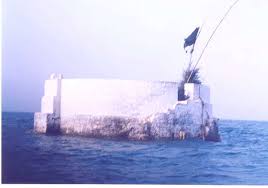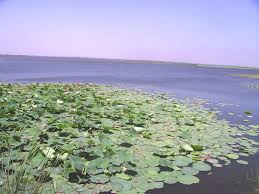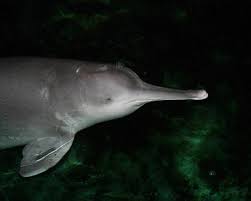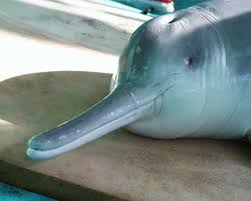Keenjar Lake is located in Thatta District, Sindh, Pakistan. It also called by the name "Kalri lake".Kalri Lake is the largest freshwater lake in Pakistan, which is 30 km long and 10 km wide. It plays a substantial ecological role in the functioning of the Indus River basin.During winter months the lake attracts several species of migratory birds. It is extremely important for a wide variety of breeding, passage and wintering waterbirds. The mid-winter waterbird counts of the late 1980s averaged 140,000 birds per winter.


Keenjhar Lake can be complete without mentioning a famous legend. In the middle of Keenhar Lake is a shrine dedicated to Noori.The shrine must have been pre 18th century.A ruler of a bygone era, Raja Jasodan issued orders that if his expecting wife delivered a baby girl, the baby was to be cast away in the river. As luck would have it, when the girl was born the Raja was away. So the mother gave the baby to a fisherman for adoption. The girl was so lively and bright that she was named Nuri (holy light). Later, Nuri was struck by leprosy. Out of depression and dejection she left her home and wandered until a Muslim saint, Pir Hoondal Shah, took pity on her. She served the Pir like a daughter. On his deathbed the saint told Nuri to bathe in the water of a particular spring, and foretold her marriage with a king. She did what he asked, and was cured of her leprosy. The saint died but some years later Nuri caught the eye of Jam Tamachi, who was the ruler of Sindh. They fell in love.when they died they were both buried at a location which now falls right in the middle of the lake. Theirs’ are the only two graves on an approximately twenty foot wide, round concrete platform in the lake, about 15 minutes by motorboat from the complex. The actual graves are said to be 50 feet below the surface of the surface.



Keenjhar Lake can be complete without mentioning a famous legend. In the middle of Keenhar Lake is a shrine dedicated to Noori.The shrine must have been pre 18th century.A ruler of a bygone era, Raja Jasodan issued orders that if his expecting wife delivered a baby girl, the baby was to be cast away in the river. As luck would have it, when the girl was born the Raja was away. So the mother gave the baby to a fisherman for adoption. The girl was so lively and bright that she was named Nuri (holy light). Later, Nuri was struck by leprosy. Out of depression and dejection she left her home and wandered until a Muslim saint, Pir Hoondal Shah, took pity on her. She served the Pir like a daughter. On his deathbed the saint told Nuri to bathe in the water of a particular spring, and foretold her marriage with a king. She did what he asked, and was cured of her leprosy. The saint died but some years later Nuri caught the eye of Jam Tamachi, who was the ruler of Sindh. They fell in love.when they died they were both buried at a location which now falls right in the middle of the lake. Theirs’ are the only two graves on an approximately twenty foot wide, round concrete platform in the lake, about 15 minutes by motorboat from the complex. The actual graves are said to be 50 feet below the surface of the surface.










